Getting a corporate headshot is an important way to impress and interest potential clients, business partners, employers, and employees. The reality is, we all judge a book by its cover, whether we want to admit it or not. You only have one chance to make a good impression, and today that can mean a photo on social media or a website.
The usage of hiring potential through LinkedIn is increasing as hiring managers lean towards professional social media platforms to look for job candidates. As HuffPost reports, social media profiles with a photo are seven times more likely to be clicked. And professional-looking headshots make it easier for recruiters to remember who you are and trust you’re a real person!
Along with social media, headshots can be used on company websites to introduce their team. This can create an excellent first impression on your potential clients if done properly! What’s more, headshots are also used for newsletters, press releases, and annual reports.
So, how to take a business headshot? Take a look at our expert tips for professional photos to get the best results!
Choosing the Right Location: Indoors vs. Outdoors
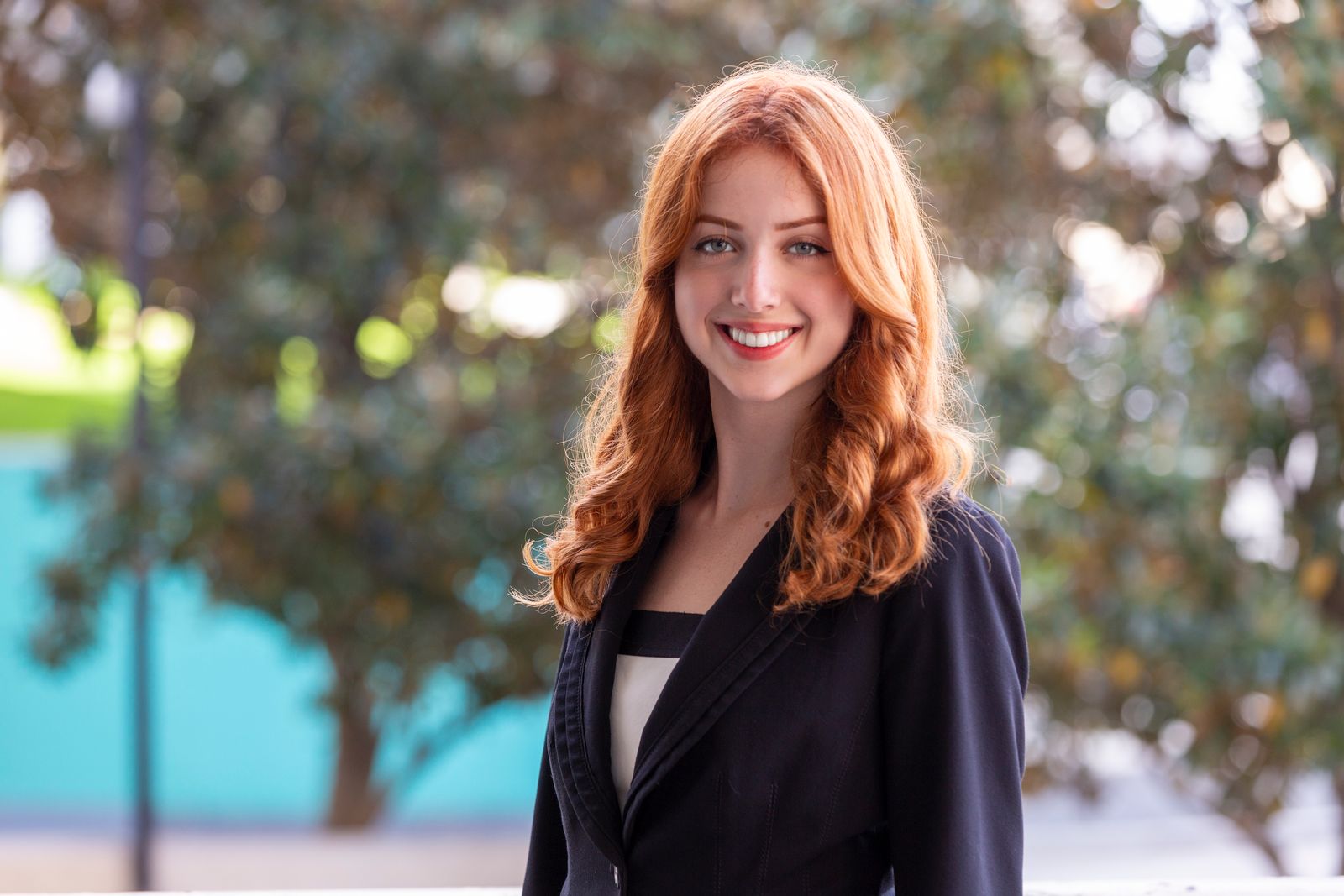
The first step is typically to decide on the appropriate location. There are two options to consider for your headshot session:
- Indoors: Indoor settings are often perfect for professional headshots because they offer controlled environments that allow photographers to focus on lighting, composition, and background without worrying about weather and other unpredictable factors. Most commonly, there are two options for your indoor headshot session:
- Studio Headshots: A photography studio is a classic choice for professional headshots as it’s equipped with high-quality lighting setups, backdrops, and all the tools necessary to create high-quality, professional images.
- Office Headshots: Taking headshots in your company’s office, on the other hand, can make the session more personalized and present your workplace in the best light. This option is particularly great for teams or businesses that want to emphasize their culture or brand identity.
- Outdoors: If you want to achieve a more relaxed and modern outcome, choose outdoor headshots. Natural light provides a flattering glow, and more interesting backgrounds (such as a cityscape, park, or architectural elements) can make your photos more original and realistic. Outdoor settings are particularly popular among creatives, entrepreneurs, and companies wanting to achieve a more approachable, engaging vibe.
Comparison Example: Indoor vs. Outdoor Business Headshot
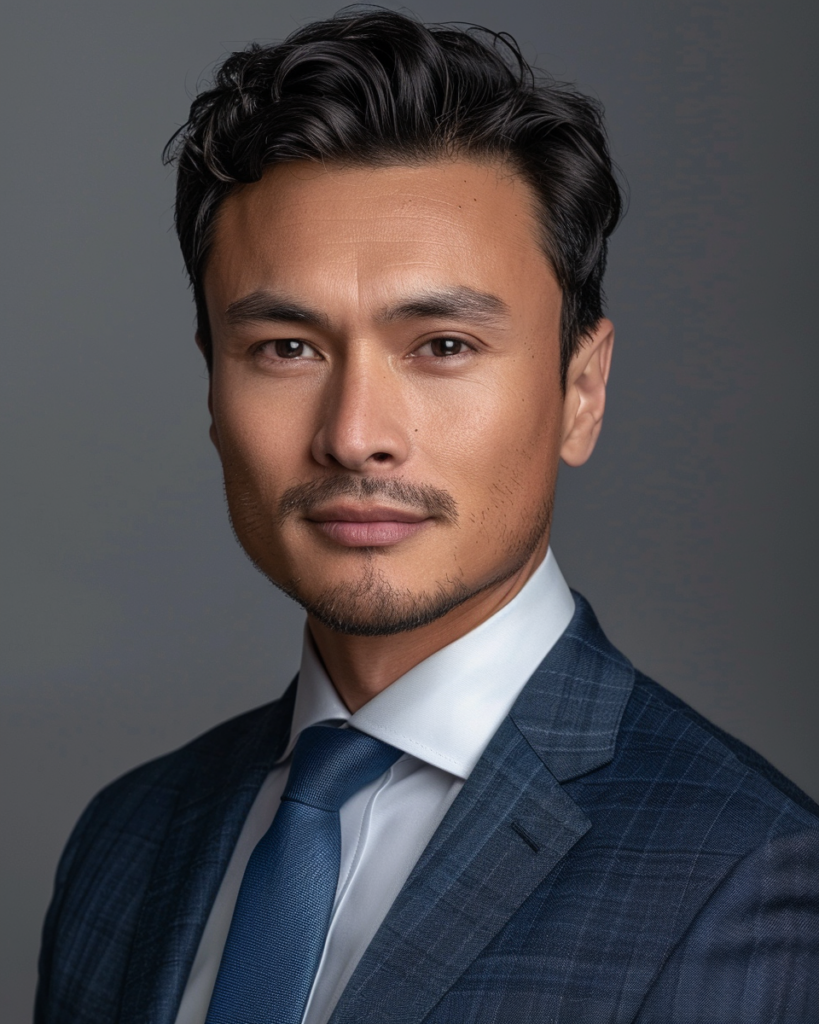
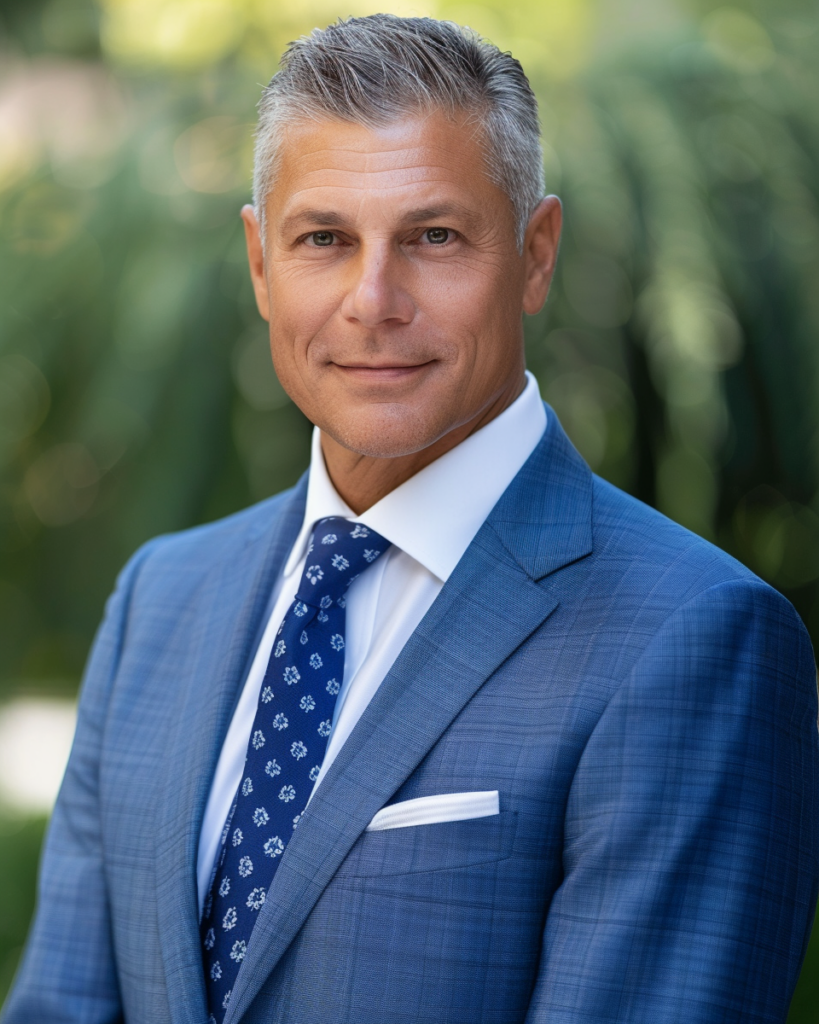
Choosing the Right Outfit: Informal vs. Professional Clothes
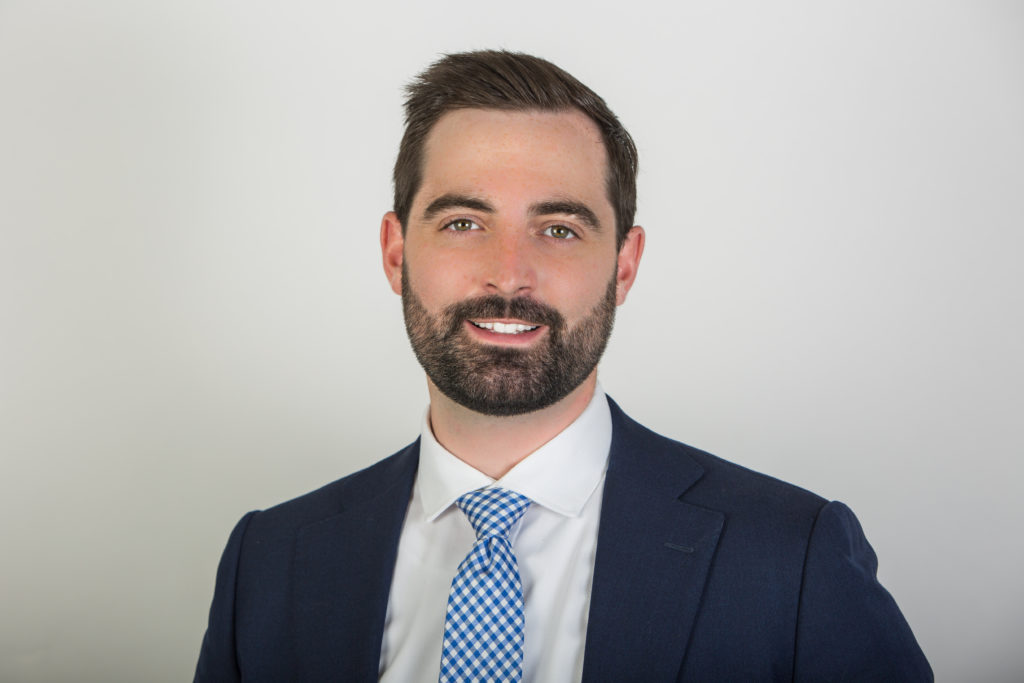
Now that you acquired some business headshot tips regarding location, let’s focus on outfits, as they play a great role in making a good impression.
Industry-Appropriate Clothing
As a rule of thumb, your headshot outfit should be aligned with the norms and expectations of your industry. For example:
- Corporate and Finance: These industries often require a more formal look, so stick to traditional business attire like suits, blazers, and ties for men, and business suits or professional dresses for women.
- Creative and Tech: You can opt for business casual clothes, which might include button-down shirts without ties for men and stylish blouses or tops with tailored pants or skirts for women. This way, you will look more relaxed yet still professional.
- Healthcare and Education: These fields often favor a more approachable yet professional look. For men, a button-down shirt with dress pants is suitable, while women might choose a blouse with slacks or a skirt.
General Clothing Professional Photo Tips
- Stick to Bold, Solid Colors: They typically photograph best, as they keep the focus on your face and prevent distractions. Deep blues, greens, grays, and earthy tones are well-suited for most skin tones and work well in both studio and outdoor settings. Avoid overly bright neon shades or anything too close to your skin tone, as such colors can wash you out.
- Avoid Busy Patterns and Logos: Patterns like stripes or florals can be distracting and may not work well with the camera. It’s fine to have simple textures, but you should avoid anything catching way too much attention. What’s more, you should avoid logos and graphics unless they are part of your business marketing strategy.
- Ensure a Clean, Well-Fitted Look: Regardless of what you wear, your outfit should be clean, wrinkle-free, and well-fitted. Clothes that are too tight or too loose can look bad on camera. Try on your outfit in advance and check how it looks both standing and sitting.
Colorful Informal vs. Professional Clothes Comparison
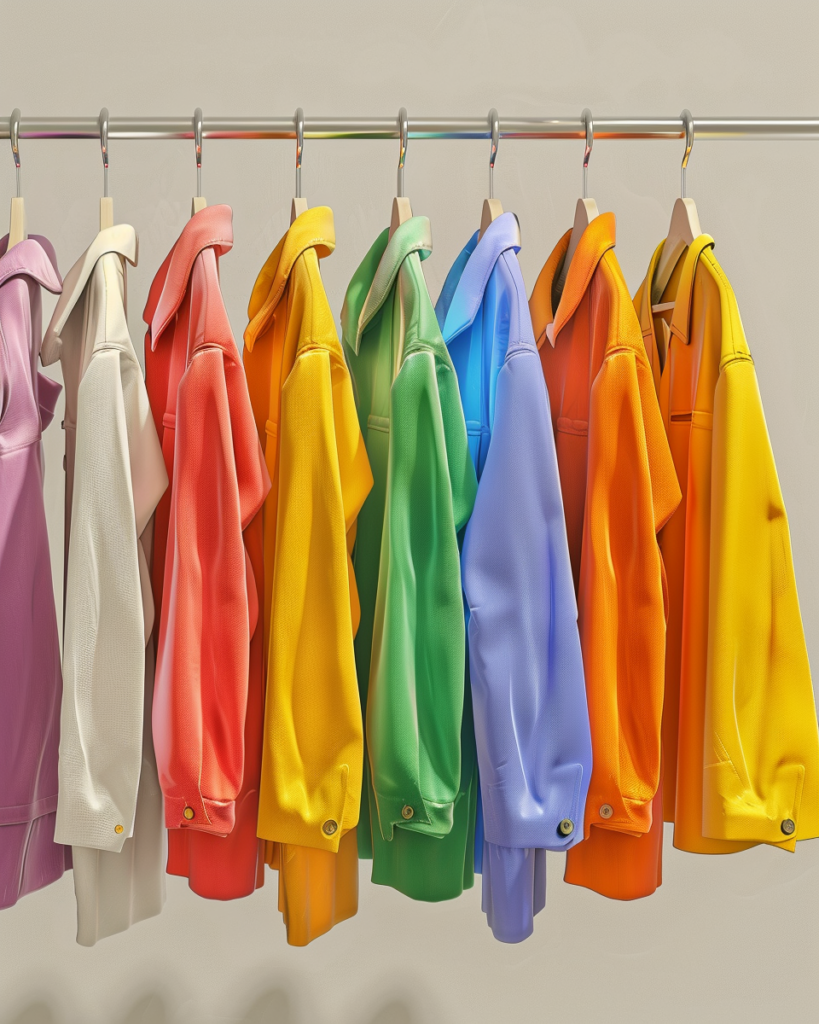
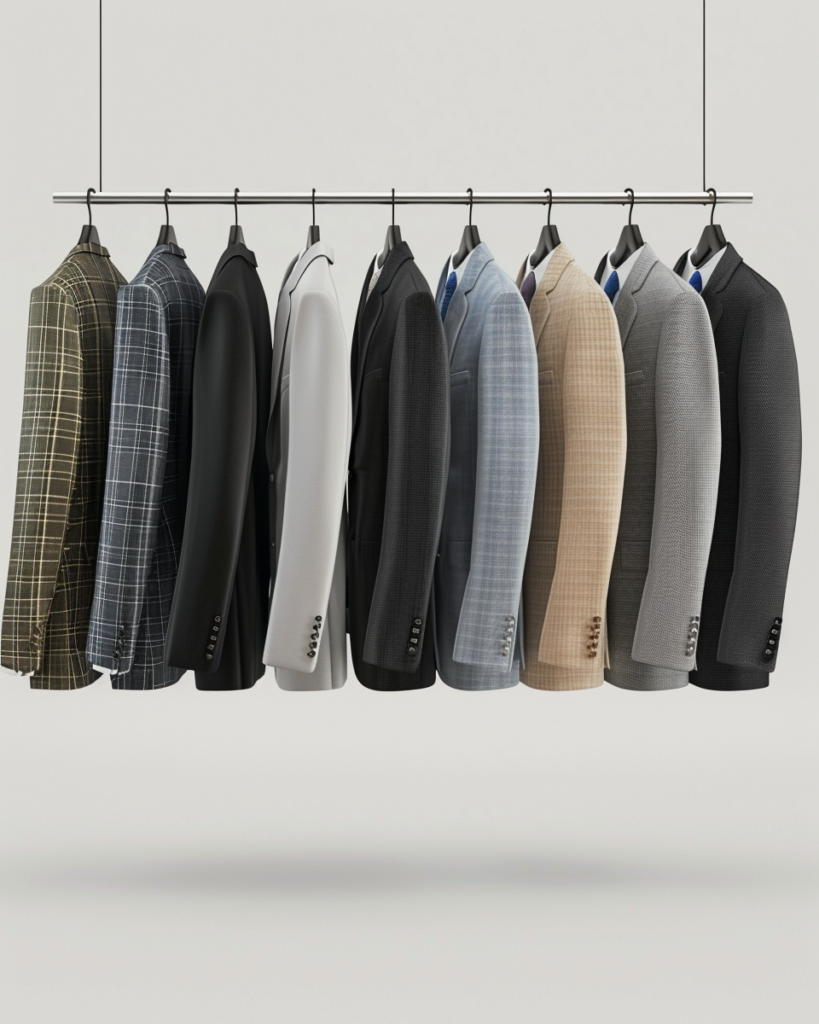
Specific Tips for Men
- A fitted dress shirt with or without a blazer is a great option. If you’re wearing a tie, choose a classic, solid-colored, or subtly patterned one.
- If going for a casual look, you can wear a high-quality, well-fitted polo or crewneck sweater, for example.
- Pay attention to grooming, including freshly shaved or neatly trimmed facial hair, tamed eyebrows, and a neat haircut.
Specific Tips for Women
- A well-suited blouse, dress, or blazer is a great choice. Avoid plunging necklines or anything too revealing.
- Simple jewelry can enhance your look, but avoid anything too large or flashy that could draw attention away from your face.
- Makeup should enhance your natural features, so avoid heavy or reflective foundation and stick to neutral tones for eyeshadow and lipstick.
Grooming & Personal Care Tips for Professional Photos

Your headshot is often the first thing people see when they look you up online, so it’s amazingly important for making a good impression. That’s why you should do your best and make sure you look as polished and professional as possible.
- Hair: Get a haircut or trim a few days before your shoot to let your hair look its best. If you have any stray grays, be sure to touch them up. Women may consider getting a blowout or styling their hair in a way that complements their face shape. Men should make sure their beards are trimmed and styled to their liking.
- Makeup: If you wear makeup, apply it lightly and naturally to enhance your features without looking artificial. A light foundation, some blush, and a touch of mascara should do the trick. For the best results, you can consider getting help from a professional makeup artist.
- Skincare: Use a mattifying powder or blotting paper to reduce shine. You can also apply a light layer of translucent powder to your face to help set your makeup and keep your skin looking matte.
Posing & Facial Expressions
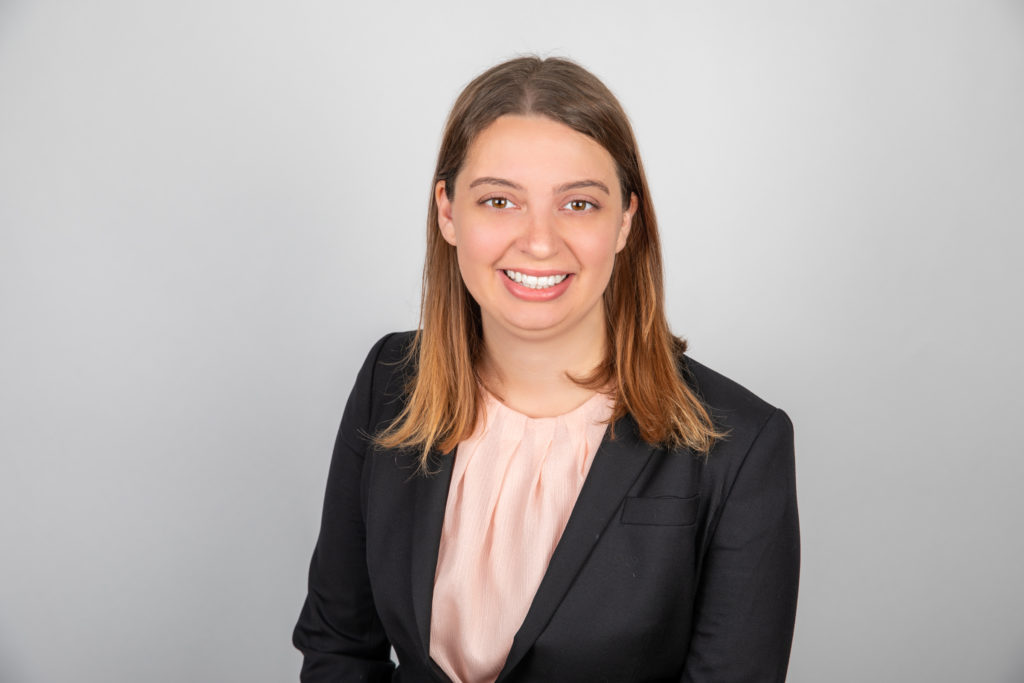
Another important batch of tips for taking a professional headshot concerns the right poses and facial expressions that will help you to look confident and approachable without looking stiff and awkward.
Practice Different Poses
Before your shoot, spend some time in front of a mirror, testing different angles. Even small adjustments can completely change the feel of your headshot.
- Angle your body slightly instead of facing the camera straight on to add dimension and avoid a flat, passport-style look.
- Keep your chin slightly forward and down to define your jawline. Such a subtle move can prevent the dreaded double-chin effect.
- Relax your shoulders to avoid looking stiff. Also, remember to take a deep breath before each shot to release tension.
Keep a Relaxed Yet Confident Expression
Your expression sets the tone for your headshot. For example, a genuine smile or a slight, professional smirk can make you look warm and approachable. Try to find the right balance:
- Think of something that makes you happy because a real smile always looks better than a forced one.
- Keep your lips closed with a subtle lift at the corners if you want to achieve a more serious and powerful look.
- Use your eyes to convey emotion. A slight squint (also known as the “smize”) makes you more engaged and helps you avoid a blank stare.
Focus on Good Posture
Posture plays a huge role in how confident and polished you appear.
- Sit or stand tall with your shoulders back but relaxed. Slouching can make you look less confident.
- Keep your arms relaxed, as crossing them can sometimes look too closed-off. Gently resting your hands in your lap or by your sides keeps the pose natural.
- Lean slightly forward to engage with the camera. This small movement creates a more dynamic and inviting look.
Smiling vs. Tense Facial Expression Comparison

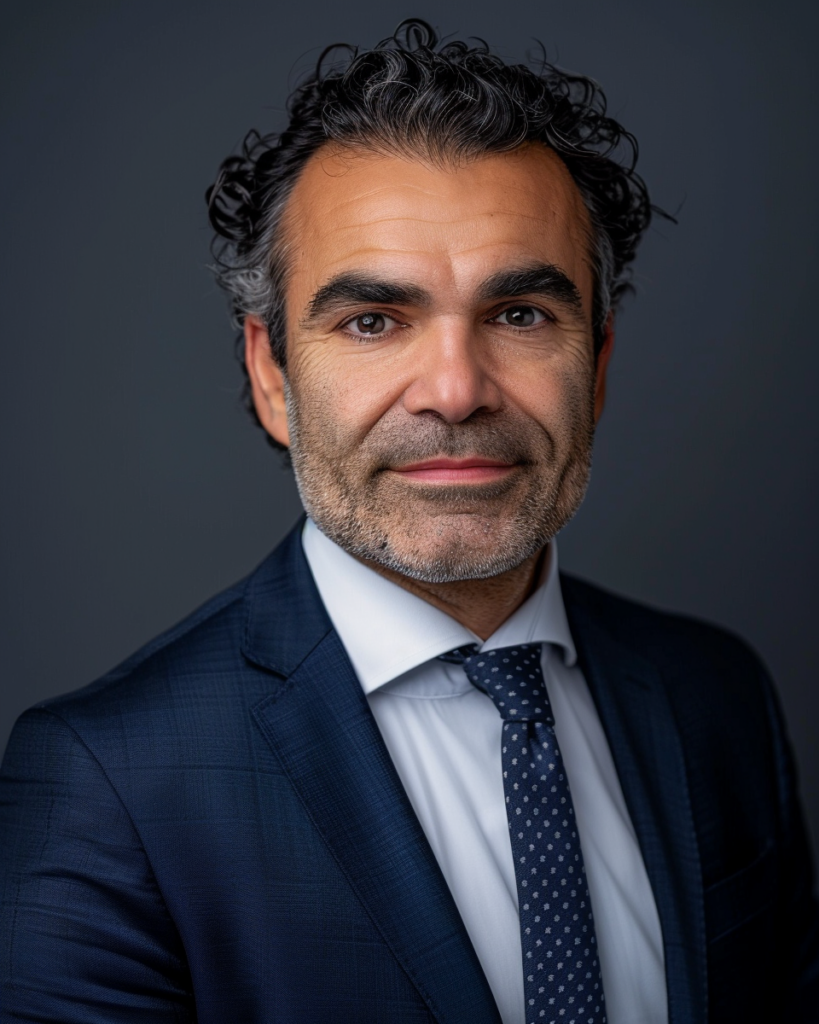
Planning Props for the Shoot
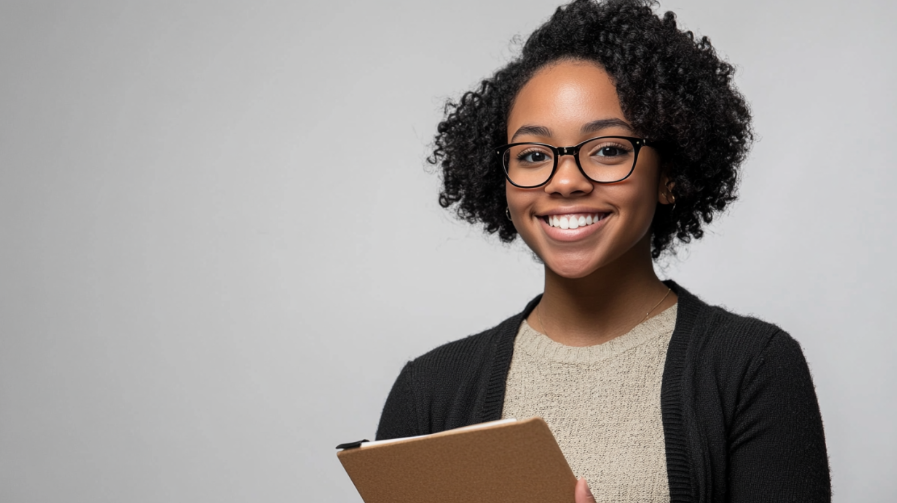
Being prepared can help your headshot session go smoothly. Here are a few things to bring with you:
- Additional Outfits: It’s always a good idea to bring a few extra outfits so you can try different options to find the perfect one for your headshot.
- Touch-up Essentials: Bring a few touch-up essentials, such as lip balm, powder, and blotting papers, to make the final corrections.
- Accessories: If you want to include any accessories in your headshot, be sure to bring them with you. Think about glasses, jewelry, or a scarf.
- Props: To make the photos more interesting and personalized, you can have props at your headshot session. These can include books, a clipboard, your notebook, or your laptop.
Accessories vs. Props on a Headshot Comparison


Getting to Know Your Photographer
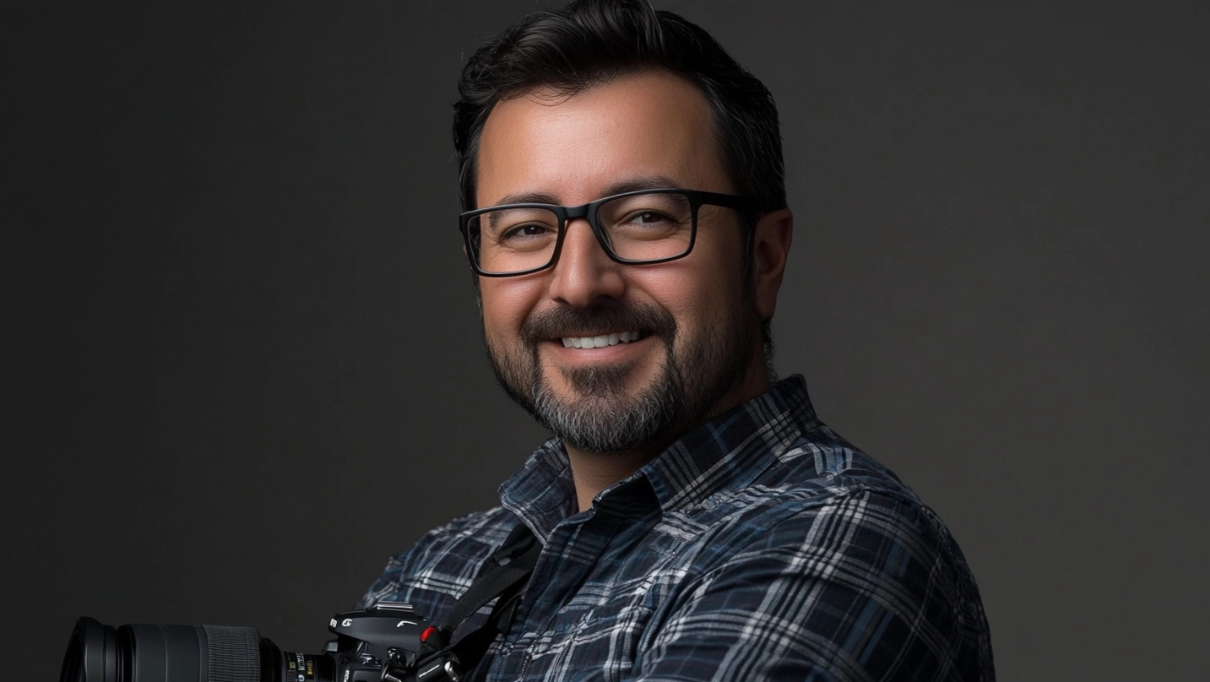
Your photographer is a key part of the headshot process, so it’s important to find one that you trust and feel comfortable with. To do so, remember to:
- Research their style: Look at their portfolio to see if you like their style. Make sure their style is a good fit for what you’re looking for in a headshot.
- Discuss your expectations: Openly discuss your expectations for the shoot with your photographer so that they can capture the perfect shot.
- Build a connection: It may be a good idea to meet your photographer before the shoot to make yourself more comfortable during the session.
Communicating with Your Photographer
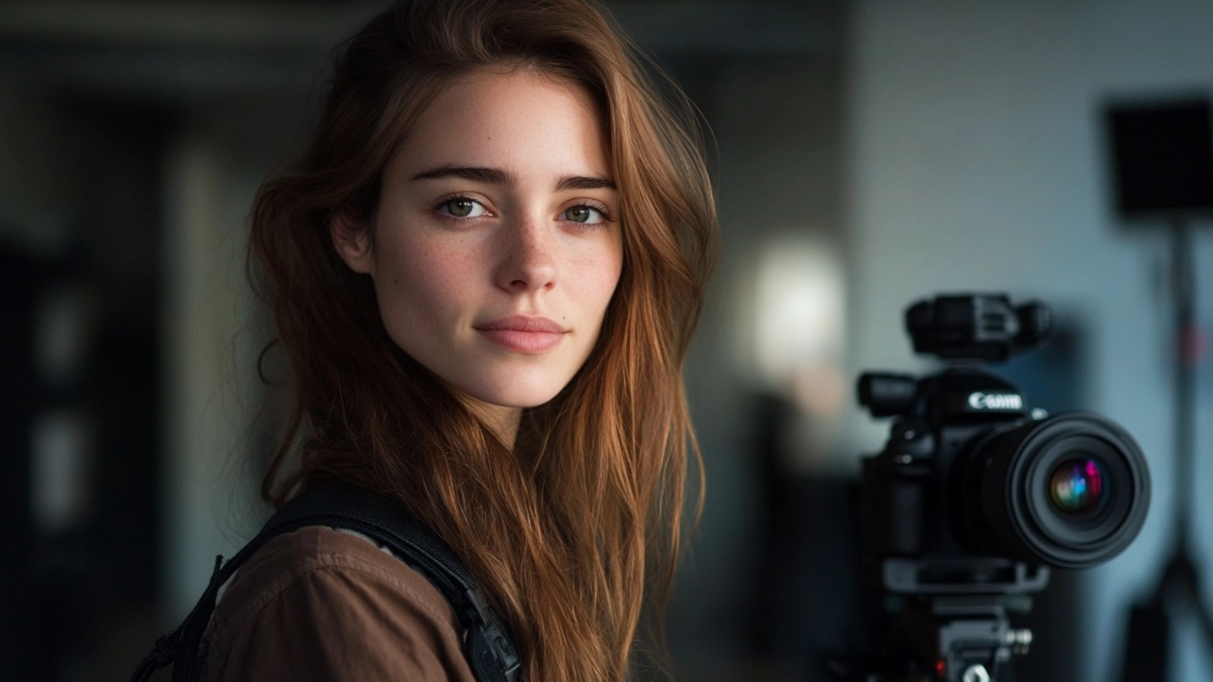
Effective communication with your photographer is essential to ensure you get the best possible headshots.
- Express Your Goals Clearly: Talk to your photographer about the overall look and feel you’re going for. Also, let them know your industry so they can tailor the shoot accordingly. Moreover, if you have any specific examples of headshots you like, share them with your photographer.
- Ask for Posing Guidance: Your photographer is an expert in posing and can help you look your best. Try out different poses to see what looks and feels most natural, and practice your smile and other expressions to find the one that conveys the right message.
- Understand Editing and Retouching Options: Tell your photographer your preferences for editing and retouching. Moreover, it’s certainly a good idea to ask for a preview of the edited photos before you approve them.
Common Mistakes to Avoid
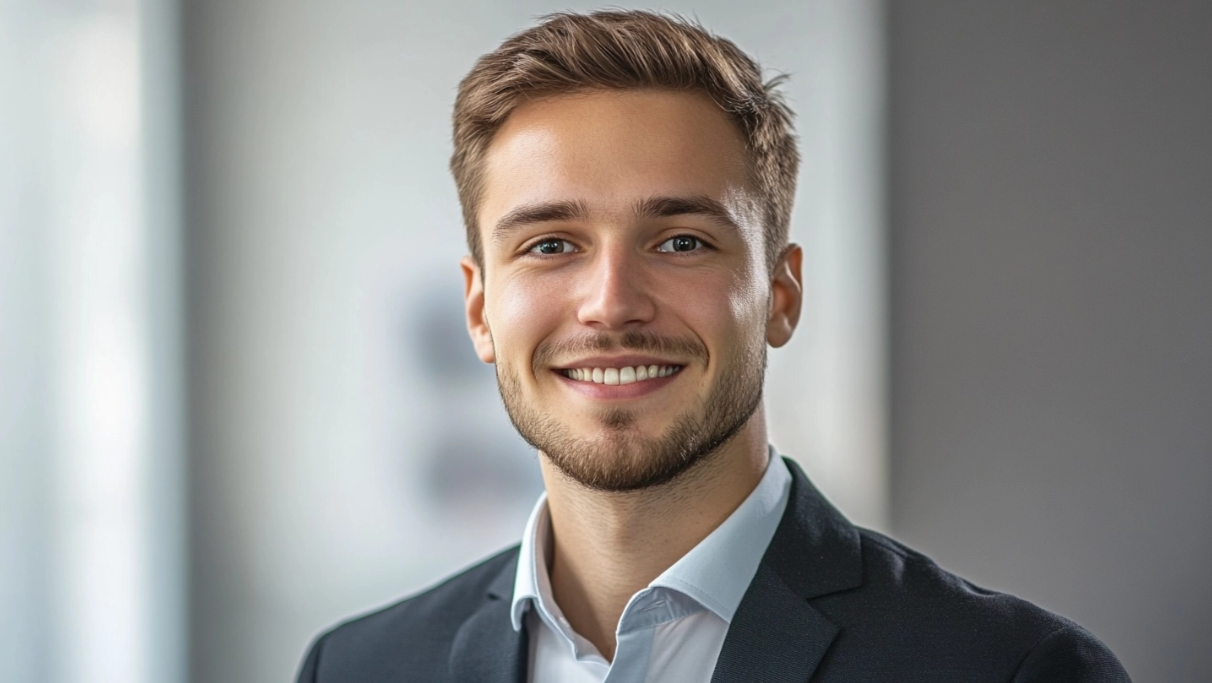
Even the most carefully prepared plans can go wrong when it comes to taking professional headshots. Here are a few common mistakes to avoid:
- Last-Minute Outfit Choices: Don’t leave your outfit choice to the last minute. Instead, take some time to think about what you want to wear and make sure it makes you feel confident and professional.
- Excessive Makeup: Too much makeup can be distracting and make you look unnatural. Always keep your makeup light and natural.
- Rushed Preparation: Don’t rush your preparation. Take your time to get ready and make sure you look your best to get excellent results.
- Unnatural Expressions: Avoid forced smiles and other unnatural expressions. Remember to relax and let your personality shine through.
Don’t Forget to Smile

Apart from learning how to get professional headshots from the tips above, remember: don’t treat getting your headshot as a chore because it will affect the end results!
Treat your headshot session as if you are meeting someone for the first time. The most important thing to avoid is a dead-eye syndrome, where your mouth is smiling, but your eyes say, “I’d rather be somewhere else.” If you’re not into it, people will be able to tell through your photo.
Final Thoughts
A great headshot doesn’t just happen by chance – it’s a result of various preparations and efficient collaboration with your photographer. By planning ahead, choosing the right outfit, grooming properly, and practicing your expressions, you’ll set yourself up for a smooth and successful session. If you want to keep your headshots fresh, we recommend updating them at least yearly.
Our photographers always provide personalized corporate headshot tips to help you prepare for your photoshoot effectively and achieve the best results. Contact us to schedule a session and get the perfect professional headshots!
